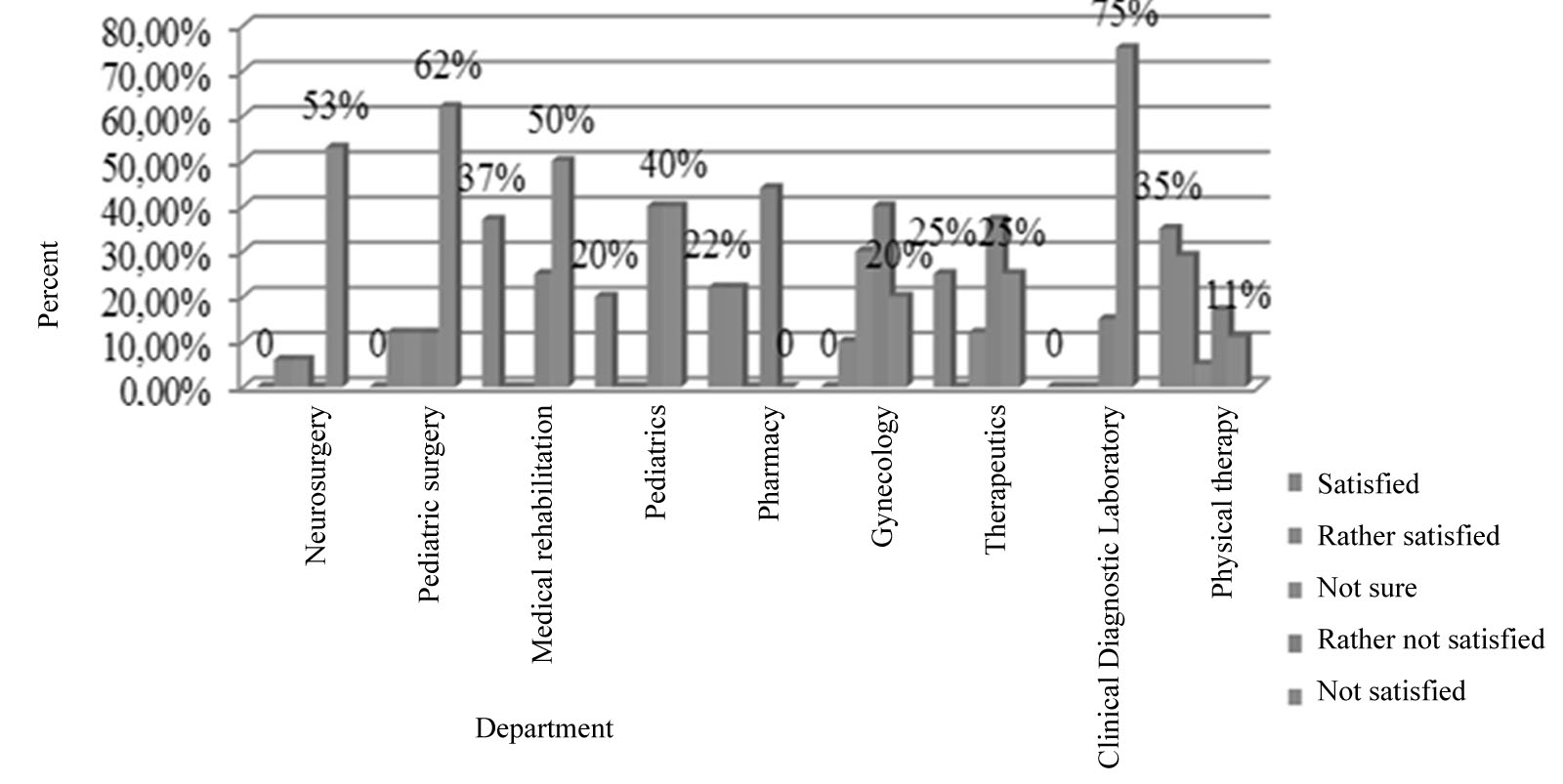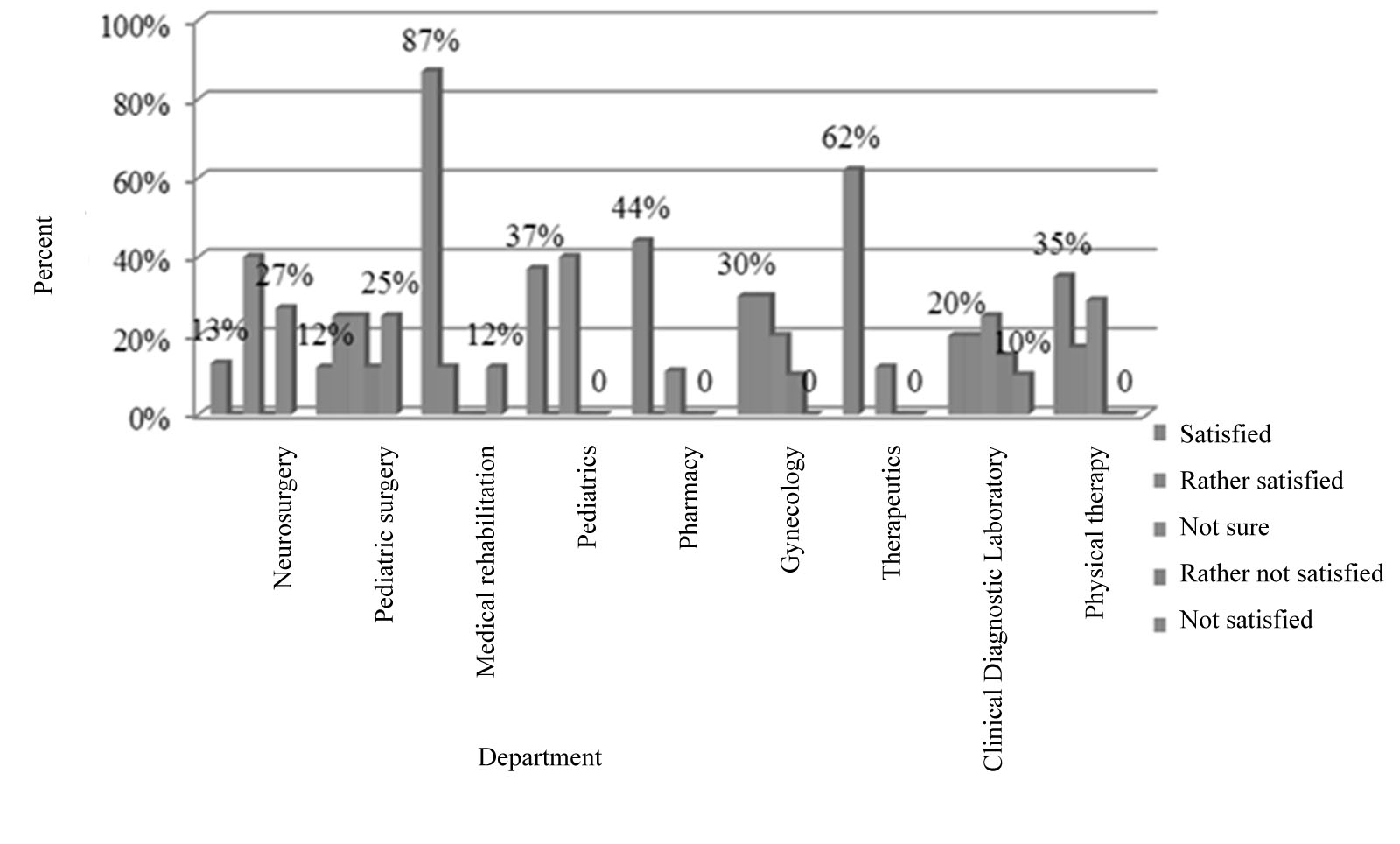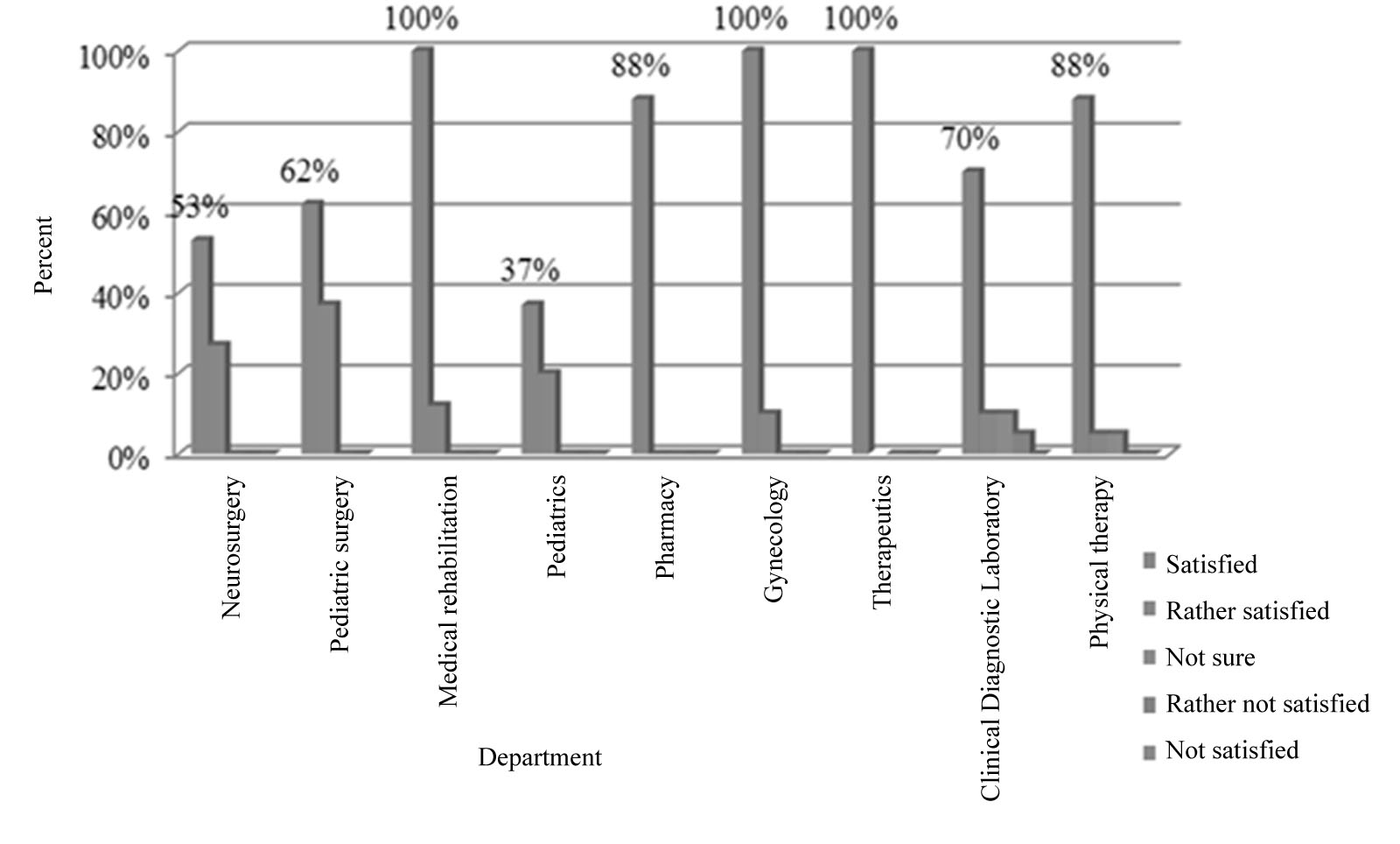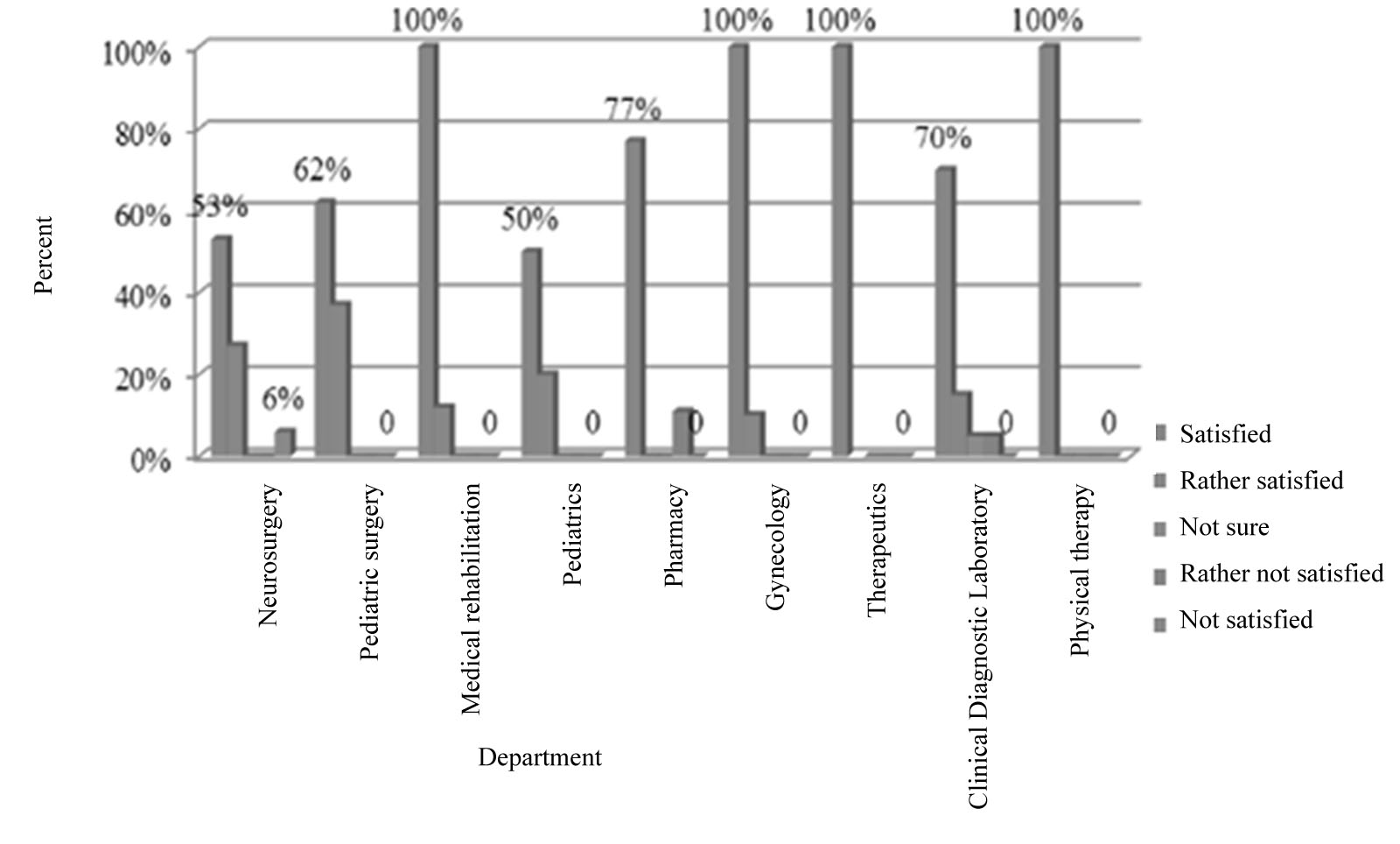Abstract
The article deals with the study of motivational preferences and job satisfaction of employees of a medical institution – an emergency hospital. Studying job satisfaction, it is important to understand that the employee's work activity is not limited to specific actions and operations, but includes various aspects related to the peculiarities of interpersonal relationships and many other situational variables. Therefore, job satisfaction is an integral characteristic that reflects satisfaction with various aspects of work activity and elements of the work situation. The authors carried out detailed work to study the features of motivation and stimulation of the work activity of health workers, also, a study of the satisfaction of employees with their work activity followed by the interpretation of the data obtained. Quantitative sociological methods (survey and questionnaire) and psychological test methods were used as research methods. The results of the study can be used in both scientific and practical areas.
Keywords: Human resources, labour, motivation, personnel, satisfaction level, work activity
Introduction
Managing any organization, regardless of the type of activity, is designed to take care of such aspects as personnel policy, the socio-psychological climate in the team, motivation and stimulation of job activity, personnel development, etc.
Motivating and stimulating employees occupies a special place among other tasks since it specifies the need to determine ways to increase working efficiency. In the healthcare system, this has become particularly relevant in recent years due to the specifics of the professions (Ayalew et al., 2019).
Given the motivation for working efficiency, the employer must take into account the employee's needs in the basic conditions under which the employee can determine the degree of job satisfaction for himself (Bogatyreva, 2019).
Job satisfaction is considered an emotional response of the staff to the work situation. It is based on the following principles: "satisfied", "not satisfied", "like", "dislike". For example, an employee may not like to perform certain tasks or can be negatively inclined to work, in general. If in the first case the situation is easy to be changed, in the second – it requires applying a considerable emotional punch or change of activity. In many cases, the activities of employees are highly structured, their activity is so subject to a given rhythm, people are in such strict limits that all this gives few chances for individual variations. At the same time, it can be assumed that job satisfaction does not directly affect work efficiency, but acts first on a person's commitment to the interests of the organization, relationships with colleagues and managers, and only then, indirectly, on the result (Khavylo, 2021).
Problem Statement
In the health care system, there are institutions of various medical profiles. Among them, a special place is taken by organizations that provide emergency, urgent, qualified medical care to the population. Currently, this type of medical care, together with ambulance stations, is provided by emergency hospitals. The activities of employees of these medical institutions have their characteristics, due to the provision of medical care to children and adults in cases of accidents and sudden serious illnesses that occurred at home, on the street, during work and at night, with mass poisoning, accidents and other threatening conditions.
The staff of the emergency hospital works in a situation of constant stress, experiencing enormous psychological overload. Daily psychoemotional and physical activities can have a significant impact on their productivity, on the effectiveness of the provision of medical services and on the reliability of their professional activities, as well as on their quality of life.
In this situation, it makes special sense to analysing the motivational components of the work of emergency hospital employees, which is the purpose of the given study.
In the human resources management system, "motivation" is defined as "the process of stimulating oneself and others to perform activities aimed at achieving the individual and general goals of the organization". There are various methods to motivate and stimulate employees. Arbitrary, all these methods can be divided into material (wages, rewards, profit-sharing, etc.) and non-material (praise, action, promotion, etc.).
Motivation can be defined as the willingness to use higher levels of effort to achieve organizational goals and meet individual needs. The concept of motivation focuses on energizing, cheering, and encouraging individuals to change behaviour to achieve the goals and objectives of the organization, to achieve higher productivity and employee satisfaction (Amaanda, 2011; Saka & Salman, 2014).
Olusegun (2012) conceptualized motivation as the ability to elicit behavioural responses. The author further argued that motivation is a force encouraging people to take favourable actions to achieve specific goals.
Job satisfaction is characterized as the satisfaction of employees with the general characteristics of the work and this affects the morale of the staff. This also applies to the expectations of the employee, i.e. the level of the employees' mood depends on the state of serving. Employee satisfaction is the most important factor determining the effectiveness of the organization as a whole (Adeoye & Fields, 2014; Ahmad et al., 2014).
Nevertheless, in most hospitals, the economical method, i.e. material incentives, predominates. Methods of non-material motivation in state bodies are given little attention. Based on the program of modernization of health care of the subject of the Russian Federation, developed in 2011, the purpose of which was to improve the quality and accessibility of medical care to the population in the regions, wages and working conditions of medical personnel have significantly improved. However, since April 1, 2013, the remuneration of medical workers is charged from the funds of Compulsory Medical Insurance. There is a total saving of money on stationery, on the payment of rewards to staff, equipment, etc.
In analysed Ufa Emergency Hospital No. 4, there is a "Regulation on remuneration", regulating the financial incentives for employees, which includes:
- remuneration within the time-based form of remuneration, within the monthly salaries established by the staffing table approved by the Ministry of Health of the Regional Hospital;
- stimulating additional payment to employees of structural divisions to reach the target indicators defined by the employment contract ("effective contract»);
- stimulating additional payment for providing paid medical and other services within the cost estimates for the work according to the standards of economic elements;
- rewards to employees based on the results of work for the year, directed by the management within the amount of the salary fund.
The system of non-material motivation is a necessary complement to the system of material stimulation for work activity (Bogatyreva, 2014; Bogatyreva et al., 2020). Moreover, the motivation system cannot be universal for all employees. Thus, among the main non-material simulators currently in effect, the following can be underlined:
- development and implementation of a system of bonuses and rewards for successful employees that are set up at the end of the current calendar year and on the Medical workers' day (June, 16th) (for example, "Best Medical Worker", "Person of the Year»);
- design and implementation of an exhibition stand with information and photos of successful employees and departments (for example, at the moment there is a stand with the best employees and departments based on the results of 2019; the stand "The hospital is proud of them", "Our instructors»);
- organization of exhibitions of employees' hobbies coincided with a professional holiday;
- creating conditions for professional growth for employees: organization of internal and external training courses for employees, participation in conferences and seminars;
- inclusion of employees in the reserve for a managerial position (the "Regulations on the staff reserve" have been developed);
- mentoring system (the "Regulations on mentoring» have been developed);
- encouraging employee's initiatives;
- deterrents: verbal reprimand, preventive conversations;
- expression of a verbal positive assessment to the employee who has successfully solved a difficult task.
It should also be noted that to motivate and improve the working conditions of the hospital staff, cosmetic repairs are made, equipment is purchased, computers to facilitate document management are installed, and also the leisure activities are held.
Under the collective agreement, for which the trade-union committee of the hospital is responsible, employees are provided with vouchers for a spa treatment, pool passes, tickets to theatres and films.
At the moment, the approval of the "Employee Motivation Management Program" is underway, in which there are the listed stimulating methods. According to this program, the motivation of staff is ordered by the regulatory documents of the federal authorities, the Charter, the Regulations on the hospital, the "Regulations on Financial Incentives" and other local acts adopted in the institution. The program is developed in accordance with the Civil Code of the Russian Federation, the Budget Code of the Russian Federation, the Tax Code of the Russian Federation, and the Charter of the institution.
The employee motivation program is organized in order to:
- improve the efficiency and productivity of all categories of employees,
- form of a stable personnel structure,
- attract qualified specialists,
- promote professional development and professional qualities of employees,
- identify individual employee's needs and determine individual motivators.
The program is developed taking into account the principles of building a motivation system:
- Availability. Every incentive should be available to all employees. The conditions must be clear to the employees.
- Gradualness. Tangible and intangible incentives are subject to a constant upward correction.
To implement measures to motivate employees, a working group is organized under the leadership of the chief doctor of the hospital including the heads of structural divisions and the employees of the personnel management structure.
Research Questions
According to the objective, the authors have formulated the following tasks:
- to carry out a theoretical analysis of the scientific literature on the current problems;
- based on the developed questionnaire to identify the degree of satisfaction with work in the team and the factors influencing its formation;
- to conduct a qualitative and quantitative analysis of the results of the study;
- to evaluate the results of the research and make recommendations for improving the level of motivation and satisfaction with the work of employees of the medical institution – Emergency Hospital No. 4.
Purpose of the Study
The purpose of this study is a comprehensive study, analysis and evaluation of the motivation and job satisfaction of employees of the Ufa Emergency Hospital No. 4.
Research Methods
Quantitative sociological methods (survey and questionnaire) and psychological test methods were used as research methods.
To study the motivation of employees of Hospital No. 4, a questionnaire was developed, which included questions about the motivation and satisfaction with the work of employees. The questionnaire was conducted as part of the development and implementation of the "Labour Motivation Management Program".
The study was conducted in December 2020, and 105 employees from 9 departments took part in the survey: neurosurgical department, children's surgical department, medical rehabilitation department, pediatric department, pharmacy, gynaecological department, therapeutic department, clinical and diagnostic laboratory and physiotherapy department. Doctors, nurses and nurse's aide also took part in it.
Findings
Consider the results of the study.
So, to the question "What motivates you to work at present?» the majority of hospital employees answered – salary (74 %). The second most popular answer is the climate in the team (40 %), and the third place was preferred by 24 % of the total sample – the desire to "not let down" friends/colleagues.
If we consider the answer options according to the departments, then 100 % of the employees of the department of cardiac rehabilitation and the pediatric department said that they are motivated to work by their salary. It should be noted that these departments have the lowest wages associated with the absence of harmful factors of production, low payments for compulsory health insurance.
The possibility of training, advanced professional qualities as an incentive to work is not considered by the employees of the pharmacy and the therapeutic department. The largest percentage of employees who chose this answer option is 47 % – the staff of the physiotherapy department.
The psychological climate in the team is a decisive factor in the work in the pharmacy and pediatric department. 77 % of pharmacy employees consider working conditions an important incentive to work. By the way, no construction repairs have been carried out in this department for a long time.
Note that among the answers to this question, an employee could offer his individual option. So, from 12 to 30 % of employees noted that they work for the sake of treating patients and helping other people.
Most of the team members of almost all departments feel free, they note that the relations in the team are friendly, anyone can count on understanding and help. The only exception is the department of pediatric surgery, where only 25 % of employees do not agree that the relationship is friendly. In the same department, 37 % of the staff believe that the head (head of the department) brings tension.
It should also be considered that employees of the pediatric department note constant conflicts in the labour team (20 %), among other departments this answer option was not popular. The answer option: "the team is divided into groups that compete with each other" was also not considered by the hospital staff.
A wide range of answers was given to the question: "What forms of moral incentives do you think are best for you?", the question is focused on identifying non-material incentives. Thus, the majority of employees considers good working conditions to be the best motivation (50 % of all respondents). Analysing the data for individual departments, we conclude that 100 % of the selected options were received from the staff of medical rehabilitation, 66 % − from the neurosurgical department and the pharmacy.
The second most important answer is the feeling of the usefulness of their activities (in general, 36 % of employees from the total sample), while the employees of the pharmacy feel the greatest benefit from their activities, and the least of all – the gynaecological department (we noted that this department accounts for the largest number of complaints from patients).
32 % of the total sample of employees believes that their activities can be stimulated by the possibility of the training and professional development. In the structure of personnel departments, to implement training, to confirm certificates, and to improve skills, a separate unit is allocated that deals with this issue, tracking the duration of training and the process of documentation.
The least number of employees would like to get honorary certificates (12 %) and interesting, complicated tasks that require skill upgrading (18 %) as stimulators of their activity.
Special attention should be paid to the question: "To what extent are you satisfied with various aspects of your job?". The following indicators have been suggested as possible answers to this question: salary rate, work schedule, career opportunities, opportunity for training, retraining, advanced training, sanitary and hygienic conditions, relations with colleagues and chiefs, technological infrastructure, encouragement of leadership, transparency of corporate information, as well as chiefs' attention, approval and objective assessment. The respondents had to scale each variable by choosing one of the options: satisfied; rather satisfied; not sure; rather not satisfied; not satisfied.
Let's analyze the results obtained for each selected category.
Figure 01 shows the results of a survey of employees satisfaction with their salaries. The respondents from the medical rehabilitation department (37 %) and the physiotherapy department (35 %) are the most satisfied with the salary rates. It should be noted that these categories include less than half of the total number of workers. The employees of other departments do not feel satisfied.
The most dissatisfied in this regard are the employees of the clinical and diagnostic laboratory (75 %), the department of pediatric surgery (62 %) and neurosurgery (53 %). This can be explained by the fact that these departments are among the most difficult in physical, emotional and social terms. The employees of these departments declare that their work should be paid much higher as compared to the current indicator.

Satisfaction of employees with career opportunities is shown in Figure 02.
Career opportunities satisfy 87 % of employees of the medical rehabilitation department and 62 % of employees of the therapeutic department. The largest number of dissatisfied employees in this category work in the department of neurosurgery. Perhaps this is determined by the fact that this department has the largest number of employees with a candidate of science degree.

Figure 03 shows the results of a survey of employees satisfaction with relations with colleagues. This indicator is highly manifested in the predominant number of employees. The smallest percentage of satisfaction with relations with colleagues is found in the departments of pediatrics (37 %) and neurosurgery (53 %). Let us note that we have not revealed employees unsatisfied with their relations with colleagues.

As for the satisfaction of employees with their relations with chiefs, i.e. department heads and senior nurses, the following can be emphasized (Figure 04). In general, most of the employees are satisfied in terms of this indicator. For example, the departments of medical rehabilitation, gynecology, therapeutics, and physiotherapy are 100 % satisfied. Unsatisfactory relations with the chiefs have been noted in the department of neurosurgery. Employees of the department of pediatric surgery and the department of pediatrics are not sure about this indicator.

The question about the level of technological infrastructure development is controversial for most employees. This is associated with low funding of the medical institution. Thus, the department of medical rehabilitation is the most satisfied in this regard (87 %), since the department has recently been overhauled and new equipment has been provided. The gynecological department is the most dissatisfied one (40 %). The question caused the greatest uncertainty among employees.
The encouragement of leadership is most appreciated at the department of medical rehabilitation (87 %), therapeutics (75 %) and physiotherapy (70 %). Employees of the department of pediatrics are not satisfied with this indicator (20 %).
Employees of the medical rehabilitation department (100 %), the physiotherapy department (76 %), the therapeutic department (75 %), and the clinical diagnostic laboratory (70 %) are fully satisfied with the transparency of corporate information.
Employees' satisfaction with chiefs' attention and approval has been noted in the therapeutic department (100 %), the pharmacy (88 %), the physiotherapy department (82 %). The department of pediatric surgery expresses dissatisfaction with this indicator (12 %).
Conclusion
The conducted research allows us to conclude that data on staff satisfaction with their job is the information about personnel risks. Obviously, it is important for any manager in terms of controlling personnel performance indicators. Understudy of this issue leads to the loss of the most valuable and highly professional staff and, as a result, to the inefficient work of an organization as a whole.
The given research has allowed drawing the following conclusions.
The hospital is carrying out certain activities to motivate employees for highly professional performance of their work. The results of the study let point out the departments that require most attention from the chiefs in terms of employees' satisfaction and motivation. These are the departments of neurosurgery, pediatric surgery, and pediatrics. The departments of medical rehabilitation, therapeutics and physiotherapy are the most satisfied with the current situation.
The Employee Motivation Management Program has been developed and is currently being approved. In our opinion, this program will contribute to solving the identified problems.
The research results enrich the scientific understanding of the motivational component of emergency hospital staff. Complementing the results of previous studies, the analysis expands the understanding of the motives, satisfaction with the labour conditions of doctors and nurses. The most significant motives of the hospital staff have been identified. Thus, the most significant motivational components include salary rates, professional development, working conditions and the climate in the team.
The theoretical and empirical data obtained can be used in medical institutions of any other profile with the aim to improve the performance of employees, form a stable staff, attract qualified specialists, and stimulate the professional development and growth of employees.
The research results enrich the scientific understanding of the motivational component of emergency hospital staff. Complementing the results of previous studies, the analysis expands the understanding of the motives, satisfaction with the labour conditions of doctors and nurses. The most significant motives of the hospital staff have been identified. Thus, the most significant motivational components include salary rates, professional development, working conditions and the climate in the team.
The theoretical and empirical data obtained can be used in medical institutions of any other profile with the aim to improve the performance of employees, form a stable staff, attract qualified specialists, and stimulate the professional development and growth of employees.
References
Adeoye, A. O., & Fields, Z. (2014). Compensation management and employee job satisfaction: A case of Nigeria. Journal of Social Sciences, 41(3), 345–352.
Ahmad, N., Iqbal, N., Javed, K., & Hamad, N. (2014). Impact of organizational commitment and employee performance on the employee satisfaction. International Journal of Learning, Teaching and Educational Research, 1(1), 84–92.
Amaanda, N. M. (2011). The impact of employees' motivation and empowerment on delivering service quality to enhance customer satisfaction: Case company X. Degree Programme in Business Management Thesis.
Ayalew, F., Kibwana, S., & Shawula, S. (2019). Understanding job satisfaction and motivation among nurses in public health facilities of Ethiopia: a cross-sectional study. BMC Nurs 18, 46.
Bogatyreva, M. R. (2014). Transformation of the labour migration management system. World Applied Sciences Journal, 30(11), 1556–1558.
Bogatyreva, M. R. (2019). Competitiveness of the organization's labor resources from the position of creating a decent level of labor. Economics and Management: scientific and practical journal, 3(147), 120–123.
Bogatyreva, M. R., Malyh, O. E., & Bibarsova, A. A. (2020). Human Capital Mobility as a Factor in the Competitiveness of Labor. European Proceedings. https://www.europeanproceedings.com/article/
Khavylo, A. (2021). Job satisfaction in the personnel motivation system. https://psycho.ru/library/3195
Olusegun, O. S. (2012). Influence of motivation on turnover of library personnel in some public universities in south west Nigeria.
Saka, K. A., & Salman, A. A. (2014). An assessment of the levels of job motivation and satisfaction as predictors of job performance of library personnel in Nigerian universities. Journal of Balkan Libraries Union, 2(2), 26–33.
Copyright information

This work is licensed under a Creative Commons Attribution-NonCommercial-NoDerivatives 4.0 International License.
About this article
Publication Date
29 November 2021
Article Doi
eBook ISBN
978-1-80296-116-4
Publisher
European Publisher
Volume
117
Print ISBN (optional)
-
Edition Number
1st Edition
Pages
1-2730
Subjects
Cultural development, technological development, socio-political transformations, globalization
Cite this article as:
Bogatyreva, M. R., Biglova, G. F., Gabidullina, G. R., & Beguev, S. A. (2021). Job Satisfaction And Motivational Preferences Of Medical Staff. In D. K. Bataev, S. A. Gapurov, A. D. Osmaev, V. K. Akaev, L. M. Idigova, M. R. Ovhadov, A. R. Salgiriev, & M. M. Betilmerzaeva (Eds.), Social and Cultural Transformations in The Context of Modern Globalism, vol 117. European Proceedings of Social and Behavioural Sciences (pp. 271-281). European Publisher. https://doi.org/10.15405/epsbs.2021.11.37

